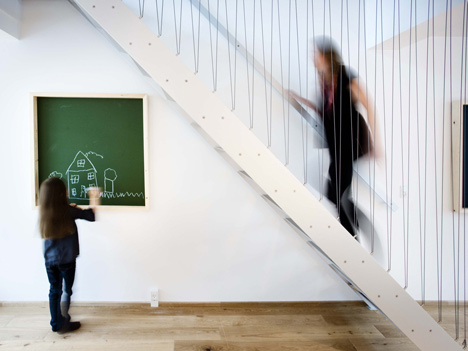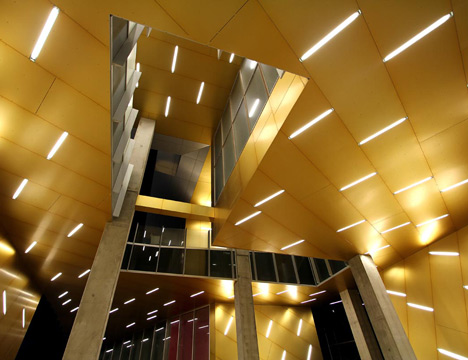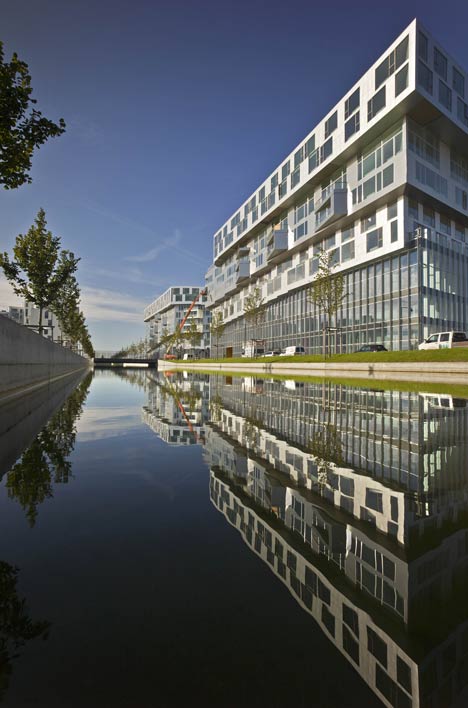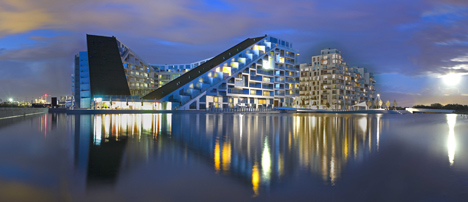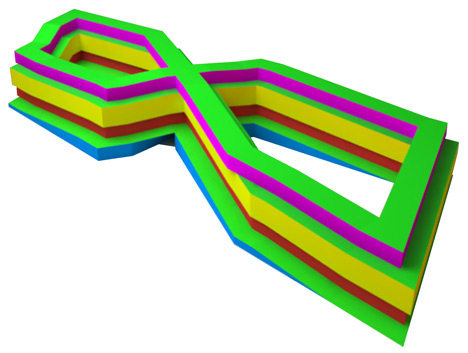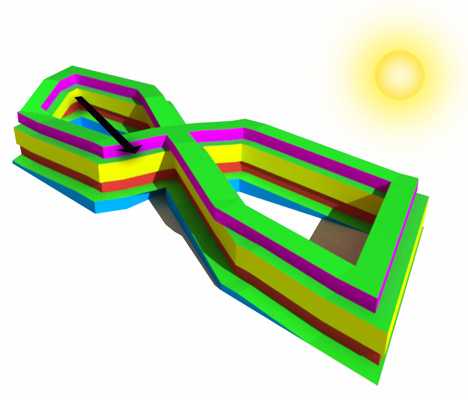October 23rd, 2010

A collective of Colombian architects have designed a memorial museum for Medellín, Colombia, to commemorate victims of conflict.

Architects on the project include Juan David Botero, Maria Fernanda Vasco, Carla Cristina Gil, Jorge Adrian Gaviria, Catalina Jaramillo, Daniel Santiago Herrera, Elías José Gomez, Víctor Hugo Rodriguez, Alejandro Naranjo and Oscar Santana.
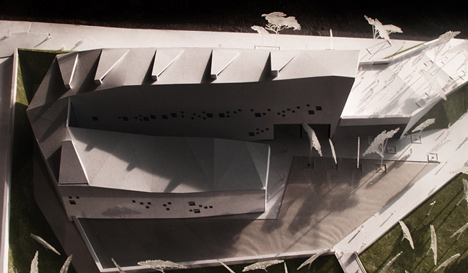
Separated into three floors, the building’s main exhibition spaces will be located at ground level, with archives on the first floor and an auditorium, cafe, workshop spaces and offices in the basement.

The building will be supported internally by portico and concrete slabs, with an outer metallic skeleton supporting the facades and roof.

The roof lights will allow indirect natural light to enter the top-level archive space.

The museum will form part of a larger park commissioned to commemorate the country’s 200th year of independence.

Centred on the Santa Elena Stream around which the city developed, new leisure facilities will include an open theatre and an interactive cascade of water.

The scheme has been commissioned by EDU, the Urban Development Corporation of Medellin.
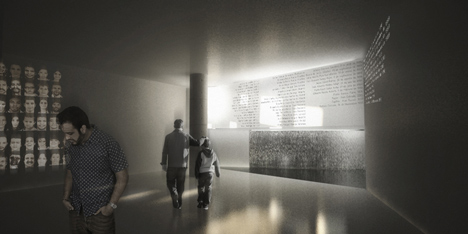
Construction of the museum is due to start next year.
The following text is from EDU:
In commemoration of Colombia’s 200 years of independence, rises a proposal to develop an urban project with aims to generate a social and environmental impact in a city’s sector which through the years has been deteriorating by housing invasion and the constant misuse of natural resources.

The project makes part of a master plan called Central-PUI, and it is located in Boston’s neighbourhood, in the 10th district of Medellín, Colombia; between the 39th and 36th Carrera, and the 54th and 51st street.

The design criteria for this project responds to the need to restore a historical and natural element such as the Santa Elena Stream, an important water source for the collective memory of the inhabitants of the city.

Along this stream the first settlements where originated, which later led to the development of the city as known today.

This element intends to be the main and guiding axis of the project by the recovery of its historical meaning.

The Project intervention develops 21,620 m2 of new public space, through which it seeks a physical and environmental recovery of the Santa Elena Stream.

As said before, this project will trigger the environmental and spatial recovery of the stream, with the streams borders as the structure and primary target for public space generation.

This will be done by a considerable amount of native flora planting, landscape design, strengthening of the sector as a new area of recreation with leisure facilities, including an open theatre with natural grass and an interactive digital display of water.

Within this proposal, a cultural facility of 3,619 m2 called “Museo Casa de la Memoria” is included, which seeks to assign a special place for the remembrance of victims of the violent conflict in Colombia and all around the world.

Promoted in its enclosures are spaces and exhibits to recreate historical events, with the aim of transforming violent acts into social learning.
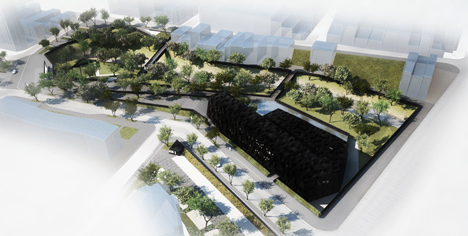
The museum is another good excuse to find a place in the city where people meet to review our history and be able to assimilate the transition from the darkness of the death that swept our streets for decades, into the light of hope of living in a city less violent and with more public spaces for social interaction.

Starting from this premise, the building is like a tunnel, looking torevive a descending journey, pretending with this, to recreate sensations of the so called transition from darkness to light, supported by itinerant or permanent educational scripts, which will tell stories of our conflict that has been present for over 40 years.

The building’s program is divided into three levels. The intermediate level is the museum’s principal access, where we can find the ticket office and two large exposition rooms. The exposition rooms can be divided depending the museum’s need of space for each exhibit.
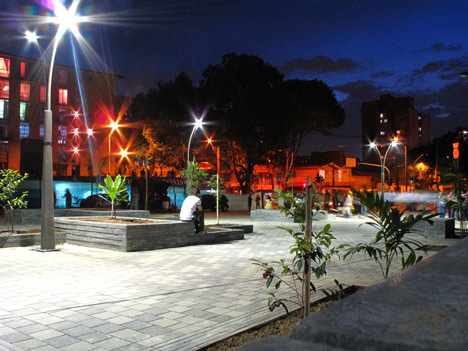
A higher level houses the Documentation Centre, an adequate space for files and documentation to be consulted by the community.

The building will use two different structural methods. Porticos and concrete slabs will hold the inside program, meanwhile a metallic skeleton structure will surround and sustain the building facades and inside roofing.

And finally at a lower level it is establish de following: an educational workshops, an auditorium for 270 people, administrative offices, a children’s gallery, the 3rd Gallery or exit, the Reflection Chamber , the restaurant, a small shop and technical areas.

This last structure is like a big folded double skin, which will act as an air chamber for thermal control, adequate for natural ventilation and for hot air evacuation.

It will also have deep bays available to prevent direct incidence of sunrays and skylights designed with the same geometry as of the building for an excellent and efficient indirect natural lighting.

The park is in its first phase of construction with work on the museum beginning in early January 2011.






















